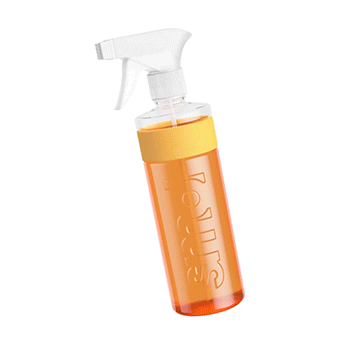
Who wins in the sustainability battle between dishwashers and washing your dishes by hand?
Many of us assume dishwashers use more hot water but in 2020, Which? (the review platform) found that even the least water-efficient dishwasher still only used half the amount of water compared to washing up a dishwasher load of dishes by hand.
And with newer models using just 10 litres of water on an eco setting (the same amount as is held by an average washing up bowl), the Energy Savings Trust found that washing up by hand can use 9 times this if you are continually running items under a hot kitchen tap.
smol steps to sustainability.
But remember, your dishwasher needs to be run when full to save you money and energy.
Not created enough washing up to fill your machine? Well, then you’re better off washing up by hand.
And if you’ve not got a dishwasher? You’re also going to have to wash up by hand.
So how do we do this in the best possible way?
By following these 5 simple smol steps:
step 1. get scraping

Get to work straight away - nobody has time for hard, dried-on food. Much better to tackle things whilst fresh. Scrape all your pots, pans, dishes and cutlery over the bin or food waste container to remove any leftovers and if there’s grease to be cleared - don’t rinse it down the sink.
step 2. hot soapy water

Fill a bowl (or half of a split sink) with hot soapy water. Check your washing up liquid bottle for dosage because some brands like smol washing up liquid will require less per sink (only 2-3 pumps in the case of smol). Fill a second bowl (or half sink) with clean hot water that doesn’t contain any washing up liquid.
step 3. soak

Soak your washing up in the bowl of hot soapy water to loosen any stubborn dried-on bits. You’ll use less water and energy when the time comes to scrub them and it’s much better than holding them under a constantly running tap. After they’ve had time to soak for a couple of minutes you can get scrubbing!
Wash the “cleaner” items first - usually this would be glasses and cutlery. Then move onto the slightly dirtier plates and bowls, finishing with the toughest items (pots and pans).
N.B. A word about knives! Don’t pile them in the sink so they can lurk amongst the bubbles unseen. Wash them one by one and immediately place them flat to dry or handle-up on a drying rack.
step 4. rinse with second bowl

Use your second bowl of clean hot water to rinse off the bubbles. Again, there’s no need to rinse under a running tap so you’ll be protecting your wallet and the planet in one fell swoop!
step 5. get drying

And to dry? Leave items to air on a drying rack or grab a passer-by with a cloth tea-towel - they can keep you company. And don’t forget the brush, cloth or sponges you used to wash up with. They need to air dry as this dramatically cuts down on bacteria. Natural sponges and cloths such as we have at smol, dry up to 4 times faster than their plastic counterparts (and they will compost in your garden at the end of their useful life!). We’re all for some plant power! Just like our washing up liquid!
This 5 step method has been shown to reduce the costs of your washing up as well as the energy and water consumption involved which is good to know, especially for those of us without a dishwasher or those of us who will not fill one on a regular basis.
And if you’re looking for a powerful plant-based friend to make your time at the sink even MORE sustainable, then check out our fruity pink grapefruit washing up liquid. It’s cruelty-free, vegan, with no triclosan, phthalates or parabens AND it even works brilliantly in cold water.
Happy scrubbing!
SMOL WASHING UP LIQUID





